Mahdi Ghafourian
SaFL: Sybil-aware Federated Learning with Application to Face Recognition
Nov 07, 2023Abstract:Federated Learning (FL) is a machine learning paradigm to conduct collaborative learning among clients on a joint model. The primary goal is to share clients' local training parameters with an integrating server while preserving their privacy. This method permits to exploit the potential of massive mobile users' data for the benefit of machine learning models' performance while keeping sensitive data on local devices. On the downside, FL raises security and privacy concerns that have just started to be studied. To address some of the key threats in FL, researchers have proposed to use secure aggregation methods (e.g. homomorphic encryption, secure multiparty computation, etc.). These solutions improve some security and privacy metrics, but at the same time bring about other serious threats such as poisoning attacks, backdoor attacks, and free running attacks. This paper proposes a new defense method against poisoning attacks in FL called SaFL (Sybil-aware Federated Learning) that minimizes the effect of sybils with a novel time-variant aggregation scheme.
Optimizing Key-Selection for Face-based One-Time Biometrics via Morphing
Oct 04, 2023Abstract:Nowadays, facial recognition systems are still vulnerable to adversarial attacks. These attacks vary from simple perturbations of the input image to modifying the parameters of the recognition model to impersonate an authorised subject. So-called privacy-enhancing facial recognition systems have been mostly developed to provide protection of stored biometric reference data, i.e. templates. In the literature, privacy-enhancing facial recognition approaches have focused solely on conventional security threats at the template level, ignoring the growing concern related to adversarial attacks. Up to now, few works have provided mechanisms to protect face recognition against adversarial attacks while maintaining high security at the template level. In this paper, we propose different key selection strategies to improve the security of a competitive cancelable scheme operating at the signal level. Experimental results show that certain strategies based on signal-level key selection can lead to complete blocking of the adversarial attack based on an iterative optimization for the most secure threshold, while for the most practical threshold, the attack success chance can be decreased to approximately 5.0%.
PAD-Phys: Exploiting Physiology for Presentation Attack Detection in Face Biometrics
Oct 03, 2023Abstract:Presentation Attack Detection (PAD) is a crucial stage in facial recognition systems to avoid leakage of personal information or spoofing of identity to entities. Recently, pulse detection based on remote photoplethysmography (rPPG) has been shown to be effective in face presentation attack detection. This work presents three different approaches to the presentation attack detection based on rPPG: (i) The physiological domain, a domain using rPPG-based models, (ii) the Deepfakes domain, a domain where models were retrained from the physiological domain to specific Deepfakes detection tasks; and (iii) a new Presentation Attack domain was trained by applying transfer learning from the two previous domains to improve the capability to differentiate between bona-fides and attacks. The results show the efficiency of the rPPG-based models for presentation attack detection, evidencing a 21.70% decrease in average classification error rate (ACER) (from 41.03% to 19.32%) when the presentation attack domain is compared to the physiological and Deepfakes domains. Our experiments highlight the efficiency of transfer learning in rPPG-based models and perform well in presentation attack detection in instruments that do not allow copying of this physiological feature.
Combining Blockchain and Biometrics: A Survey on Technical Aspects and a First Legal Analysis
Feb 21, 2023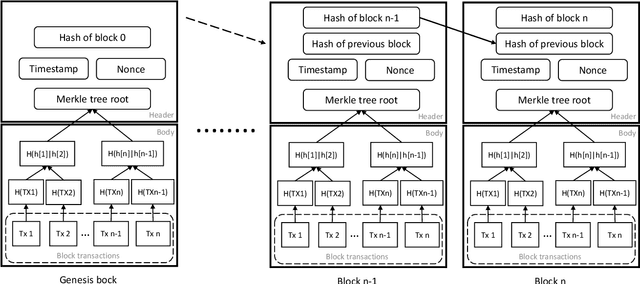
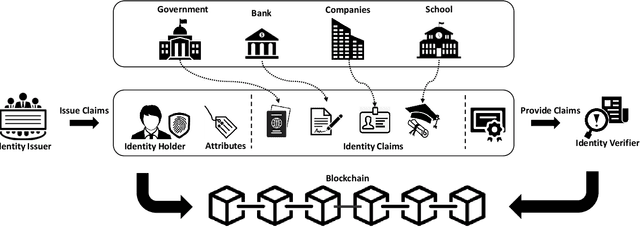
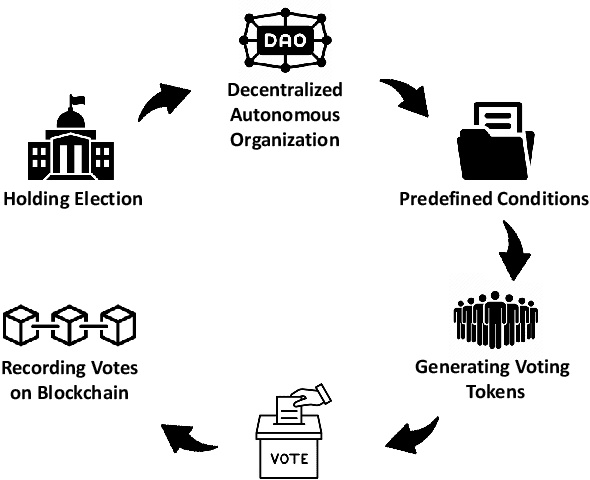
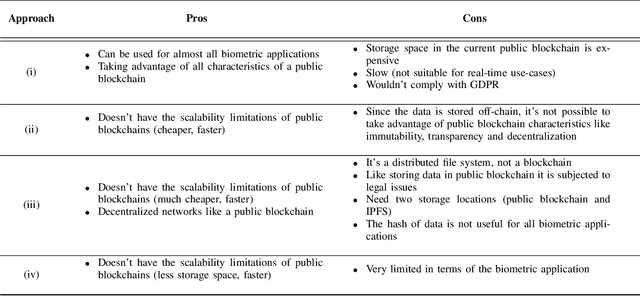
Abstract:Biometric recognition as a unique, hard-to-forge, and efficient way of identification and verification has become an indispensable part of the current digital world. The fast evolution of this technology has been a strong incentive for integrating it into many applications. Meanwhile, blockchain, the very attractive decentralized ledger technology, has been widely received both by the research and industry in the past years and it is being increasingly deployed nowadays in many different applications, such as money transfer, IoT, healthcare, or logistics. Recently, researchers have started to speculate what would be the pros and cons and what would be the best applications when these two technologies cross paths. This paper provides a survey of technical literature research on the combination of blockchain and biometrics and includes a first legal analysis of this integration to shed light on challenges and potentials. While this combination is still in its infancy and a growing body of literature discusses specific blockchain applications and solutions in an advanced technological set-up, this paper presents a holistic understanding of blockchains applicability in the biometric sector. This study demonstrates that combining blockchain and biometrics would be beneficial for novel applications in biometrics such as the PKI mechanism, distributed trusted service, and identity management. However, blockchain networks at their current stage are not efficient and economical for real-time applications. From a legal point of view, the allocation of accountability remains a main issue, while other difficulties remain, such as conducting a proper Data Protection Impact Assessment. Finally, it supplies technical and legal recommendations to reap the benefits and mitigate the risks of the combination.
OTB-morph: One-Time Biometrics via Morphing
Feb 17, 2023Abstract:Cancelable biometrics are a group of techniques to transform the input biometric to an irreversible feature intentionally using a transformation function and usually a key in order to provide security and privacy in biometric recognition systems. This transformation is repeatable enabling subsequent biometric comparisons. This paper is introducing a new idea to exploit as a transformation function for cancelable biometrics aimed at protecting the templates against iterative optimization attacks. Our proposed scheme is based on time-varying keys (random biometrics in our case) and morphing transformations. An experimental implementation of the proposed scheme is given for face biometrics. The results confirm that the proposed approach is able to withstand against leakage attacks while improving the recognition performance.
Toward Face Biometric De-identification using Adversarial Examples
Feb 07, 2023Abstract:The remarkable success of face recognition (FR) has endangered the privacy of internet users particularly in social media. Recently, researchers turned to use adversarial examples as a countermeasure. In this paper, we assess the effectiveness of using two widely known adversarial methods (BIM and ILLC) for de-identifying personal images. We discovered, unlike previous claims in the literature, that it is not easy to get a high protection success rate (suppressing identification rate) with imperceptible adversarial perturbation to the human visual system. Finally, we found out that the transferability of adversarial examples is highly affected by the training parameters of the network with which they are generated.
OTB-morph: One-Time Biometrics via Morphing applied to Face Templates
Nov 25, 2021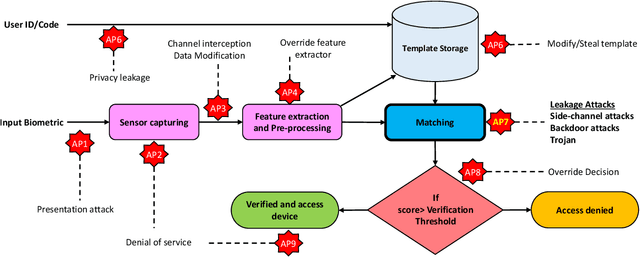

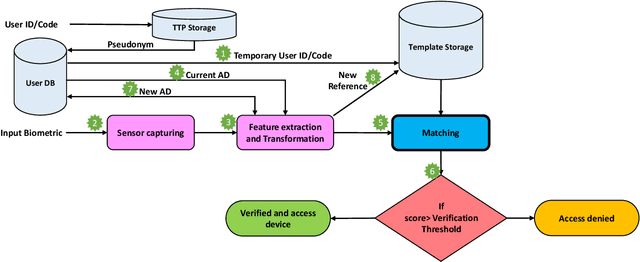
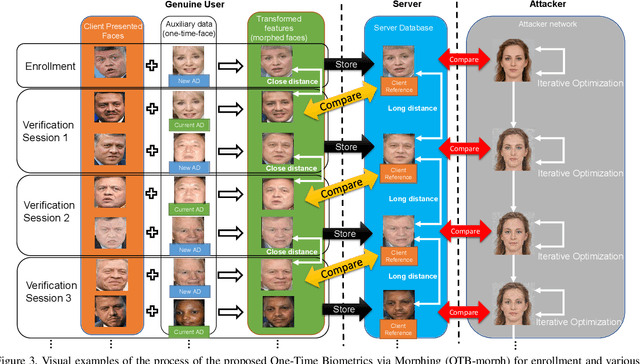
Abstract:Cancelable biometrics refers to a group of techniques in which the biometric inputs are transformed intentionally using a key before processing or storage. This transformation is repeatable enabling subsequent biometric comparisons. This paper introduces a new scheme for cancelable biometrics aimed at protecting the templates against potential attacks, applicable to any biometric-based recognition system. Our proposed scheme is based on time-varying keys obtained from morphing random biometric information. An experimental implementation of the proposed scheme is given for face biometrics. The results confirm that the proposed approach is able to withstand against leakage attacks while improving the recognition performance.
 Add to Chrome
Add to Chrome Add to Firefox
Add to Firefox Add to Edge
Add to Edge